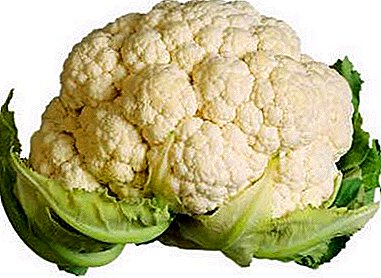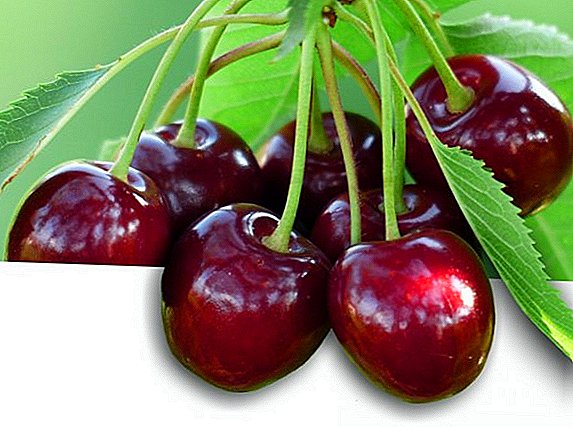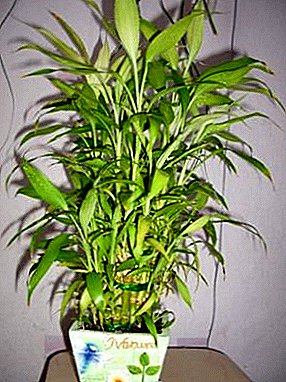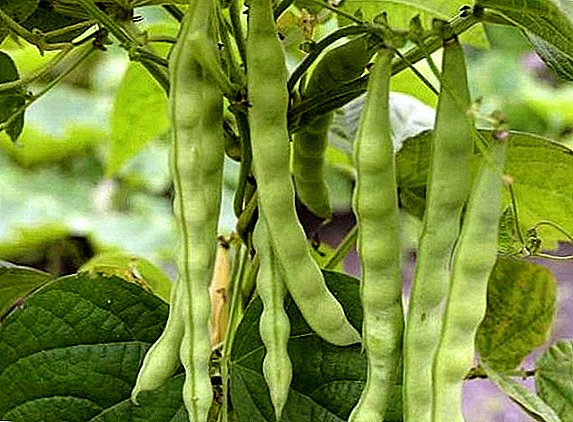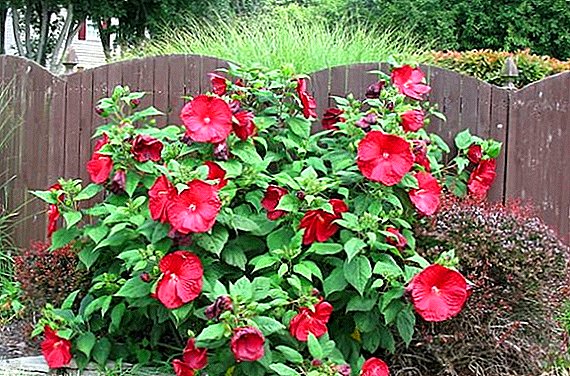 The Chinese rose has always been remarkable for its extraordinary beauty. Bright, lush buds have won the hearts of many people. Therefore, it is increasingly becoming a wonderful decoration not only for apartments, but also for offices, and recently the Chinese rose has even been planted in the garden.
The Chinese rose has always been remarkable for its extraordinary beauty. Bright, lush buds have won the hearts of many people. Therefore, it is increasingly becoming a wonderful decoration not only for apartments, but also for offices, and recently the Chinese rose has even been planted in the garden.
Description
Chinese rose or hibiscus, as it is called, appeared in Europe in the XIX century, while the flower could only be seen in the botanical gardens. Hibiscus acquired its popularity at the beginning of the 20th century, when the plant began to appear in houses and grown in flowerpots.
In the world there are about 300 species of this flower. Some are used in perfumery and cooking. The most famous application of hibiscus in cooking is the well-known karkade tea.
Did you know? The hibiscus flower is a national symbol of South Korea and is depicted on the emblem of this country.

People hibiscus called the "flower of death." There is an opinion that this plant can negatively affect a person’s well-being and even select his vitality. But despite such a terrible nickname, many lovers of bright and beautiful flowers with great pleasure grow this plant at home.
You will probably be interested to read about why hibiscus is called the flower of death.
Today, there are a large number of different species of this plant. Hibiscus comes in the form of a tree, shrub and grassy plants. This perennial flower can live up to 30 years, while reaching a height of 2 meters.
Hibiscus flowers are large, funnel-shaped. Most often you can see the buds of red or crimson flowers, regular or terry, depending on the type of plant. Hibiscus leaves pointed to the end, very similar to birch. Therefore, the crown of a tree or shrub looks very lush. 
Landing
Hibiscus is a thermophilic plant and does not tolerate extreme cold. The climate of your region should be taken into account when planting on the site. There is an alternative way: to plant a flower in a large pot and bring it into the house at the onset of the first cold weather. Alternatively, you can land on the site Syrian hibiscus, which is resistant to frost and cold.
Like the grass hibiscus, the Mallow, Maldacea, Lavathera, Cotton, Abutilone, Castor Bean, Stockrose, Althaea Medicinal also belong to the Malvaceae family.
Before planting the plant should determine its location, depends on how long the hibiscus will bloom. With the right choice of site, a flower can take root in one place without transplanting up to 20 years.
To plant a tea rose should be warm in the spring, when the period of night frosts will pass, so that the plant could settle down and grow stronger over the summer. An important factor in the process of planting this flower is the soil.  Very often, a ready-made substrate is used for planting and transplanting hibiscus, which contains all the necessary nutrients.
Very often, a ready-made substrate is used for planting and transplanting hibiscus, which contains all the necessary nutrients.
It is possible to prepare such a mixture yourself, in its composition must be:
- sod, leaf and coniferous earth;
- humus;
- sand;
- peat;
- some charcoal.
In order for the tea rose to take root, the acidity of the soil must be neutral, although fluctuations are permissible.
Important! With too high or low acidity, the plant will be more difficult to absorb nutrients. This can lead to disease and even death of the plant.
Video: planting rhizomes of grassy hibiscus
The pit for the landing of hibiscus should be 2 times the size of its root system. At the bottom should be laid out a drainage layer of brick chips 15 cm high, after which - a layer of sand 10 inches, then compost and again sand.
To fill the remaining space, you should mix the top layer of soil with peat and sand, the main thing: to observe the ratio 2: 4: 1. After preparing the pit, the seedling should be placed in such a way that the basal neck is slightly above the ground.
We recommend to get acquainted with the beneficial and harmful properties of hibiscus.
Gently fall asleep tree and water. Hibiscus gets on well with garden roses, so you can plant it between rose bushes. To plant a tea rose should be in early spring, so that she has time to get stronger and get used to the soil.
Care
In order for hibiscus to delight with its bright colors, it is important not only to plant it properly, but also to take good care of it. Top dressing, watering and proper warming are the key to a healthy and beautiful flower. 
Watering
Watering hibiscus should be regular, but do not forget that it is necessary to carry out such manipulations only when the earth around the cavity dries. If the summer is too hot, the flower should be watered abundantly every day. Do not forget about spraying leaves.
Get acquainted with the nuances of growing garden, Syrian and Chinese hibiscus.
In the spring and summer spraying should be carried out a couple of times a week, if the summer is too hot, then spraying, as well as watering, it is recommended to be done daily.
If the hibiscus is indoors in winter, spraying should be carried out 1 time in 3 days, since the working heating devices adversely affect the plant. Water for irrigation and spraying must be defended. 
Top dressing
Although hibiscus and unpretentious care, there are times when the plant does not bloom for a long time. This is due to the fact that the flower does not receive the necessary substances in the right amount. Top dressing is very important because it allows you to balance all the nutrients and helps to accelerate flowering.
There are several principles of feeding hibiscus:
- it should be carried out no more than 1-2 times a month;
- feed the plant should be in the evening - then it will absorb nutrients faster;
- to feed well, two hours before this should be plentifully water the land with settled water.
Important! In the cold season, the plant should be fed once in the period from October to March and twice from April to September.
 You can feed the plant with both organic and mineral fertilizers:
You can feed the plant with both organic and mineral fertilizers: - Manure. This is an organic fertilizer that can be used for almost all plants. It perfectly nourishes the soil, but you need to remember some points. You can not feed the soil with fresh manure, it should lie down a bit and grow stale. Feed plants with manure can be from 1 year of life.
- Peat tablet. Another effective organic remedy. It nourishes the soil well.
- Mineral fertilizers - phosphorus, nitrogen and potassium. It is important to remember their proportions: 1: 2: 3. To replenish reserves of phosphorus, bone meal is perfect. But as a good fertilizer nitrogen will be urea.
You can also use complex fertilizers for home plants. Such simple ways to help keep the plant healthy, accelerate its growth, and very soon beautiful buds will delight your eyes.
As a complex fertilizer often used such as "Tsitovit", "Master", "Mortar", "Crystal", "Kemira".

Pruning
Pruning is one of the important stages after planting hibiscus. It allows not only to give the desired shape to the plant, but also to get rid of the weak and sick shoots. Therefore, exclude this procedure is not worth it. After planting a young plant you need to shorten all branched branches to the level of 2-3 buds.
Further, already from February, branched shoots should be cut to the bud, but the main branch should be shortened to the level of 5-6 buds. After the hibiscus grows to the desired height, you can make the shape of the crown, cutting off the top of the trunk and all unnecessary greens. Be sure to do maintenance pruning after crown formation, remove weak and painful branches and sprouts.
Did you know? In order for the hibiscus to bloom, you need to do a special pruning: in early spring you should shorten the growth by one third. This will increase the number of flower buds.
If hibiscus grows unevenly or one-sided, you need to give him the opportunity to build a new beautiful crown. Therefore, anti-aging pruning is carried out. To do this, it is enough to remove the old dry branches, and shorten the rest by a third so that the plant can “breathe”. 
Wintering
Most of the varieties of hibiscus - frost. Therefore, they do not require much preparation for winter. Species such as grass and shrubs should be pruned, watered abundantly, but this should be done before the first frost. A few days later, the plant should spud.
But from November, it is already possible to begin the process of warming. Fully prepared plant and soil are covered with sawdust and dry leaves, so that the mound height is up to 15 cm.
But young bushes should be covered more carefully, it can be done in several ways:
- to bend the whole bush to the ground and cover it with a special insulating cloth, then cover it with polyethylene;
- around the bush you can put a frame that is covered on top with a special material in several layers.
Video: preparing the grassy hibiscus for winter
Important! Hibiscus goes out of rest for a very long time. Therefore, we must be especially careful not to accidentally uproot a living plant during the spring preparation period. plot.
Breeding methods
Tea rose can be propagated in several ways:
- Cuttings. This method is good for vegetative propagation in summer. Therefore, at the time of trimming the bush at the end of flowering should prepare cuttings. After that, they need to be treated with growth stimulants and placed in a greenhouse with peat. Cuttings rooted throughout the month, then they should be transplanted into pots with a mixture consisting of leaf and sod land, sand and peat. As soon as the shrub begins to form, immediately you need to transplant it to a prepared place. With proper care and compliance with all rules, the hibiscus cuttings can begin to bloom in the first year.
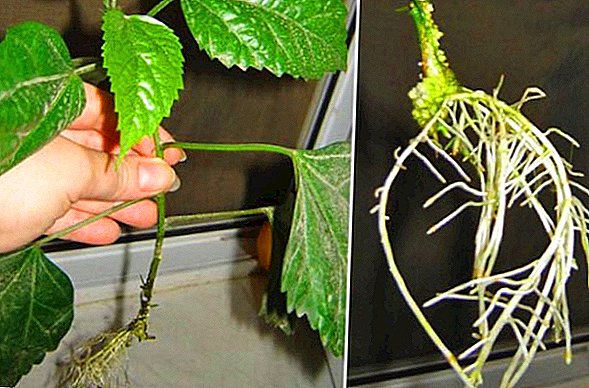
- The division of the bush. This method is considered the most simple and effective, since the plant fully retains all its characteristics. To do this, you just need to carefully dig up the bush and clean the root of the excess earth. In this method, the main root is cut, but this must be done very carefully so as not to damage the small roots. The fresh cut is processed with wood ash so as not to rot. After that they plant a bush in the prepared pit. After tamping the land with a bush should be watered with warm water.
Video: reproduction of grassy hibiscus by dividing the bush
- Seeds. This method is best applied in January, the deadline is March. It depends on the correct preparation how the plant will take root:
- before sowing, soak the seeds in a solution of potassium permanganate for 45 minutes;
- then the seeds should be decomposed into a cloth moistened with Epin’s solution, having previously spread it out in a plastic bag;
- as soon as the first shoots appear, they should be planted in separate peat pots filled with sand and peat. These pots should be covered with polyethylene and placed in a warm place with a temperature not lower than +24 ° C. It is desirable to provide lower heating to the seeds, as well as additional lighting if the plants begin to stretch;
- hibiscus should be planted at the end of May, along with pots.
Diseases and pests
Hibiscus rarely attracts the attention of pests, but in a very dry period it can be attacked by a spider mite, aphid, whitefly. You can fight insects with insecticides. The treatment is carried out in the morning or in the evening, pre-watered the plant as it should. It is important to remember that there must be a decade between applications.
The most common disease in hibiscus is chlorosis. This disease is characterized by falling leaves, while new ones grow yellowish. The cause of this disease is a lack of iron and nitrogen.
Therefore, in such cases, you should immediately begin to fertilize the plants with mineral resources in order to increase the level of missing elements. Hibiscus is an unpretentious plant. And proper care will allow him to live for many years and delight you with beautiful, bright colors.
Reviews from the network







